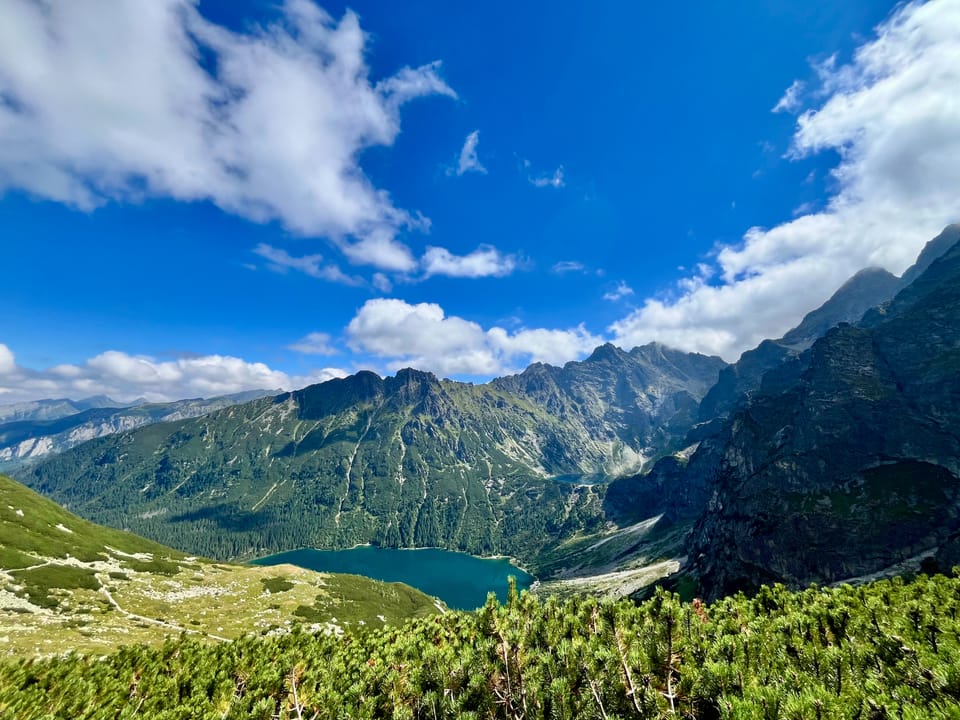Week 58-61 | Summary - Reclaiming my routine 👌
After a needed break, I returned to freediving with a fresh mindset — focusing on technique, awareness, and joy. Training without wetsuit or noseclip helped me reconnect with the water. The recovery period made me stronger than before.

After a much-needed resting period, the last four weeks have been all about rebuilding momentum and reconnecting with the water. It wasn’t just about getting back into water — it was about refining my approach, listening to my body, and rediscovering the joy of freediving. I really missed it and I missed the long dives :)
Checkout how did I spend my active recovery period:
Slowing Down to Speed Up
Last year was intense. I pushed hard, trained with high intensity, and loved every moment. But eventually, the failures started to pile up. Not because I was physically exhausted — but because I hadn’t given myself time to recover. I ignored the need for rest and recovery.
So I took a step back. I reduced the number of sessions, lowered the intensity, and shifted my focus to shorter, more mindful dives. During my vacation, I focused more on shorter dives, and the technique. I swapped wetsuits for swimwear dives, noseclips for raw water sensation. I wanted to better feel every movement, every flow of the water, every small change in my feeling. It was a good period of active recovery.
Coming back, I focused on the basics:
- Clean technique
- Relaxation and awareness
- Conscious exits and clean surface protocol
I started with 25-50m distances, and the feeling was promising. My connection with the water felt stronger than before. I incorporated stretching, dry training, and gym work, just like before the break. I took my time to get used to dive without the noseclip. It was challenging at the beginning, but I learned to exhale some air through my nose when resurfacing, and it helped:)
I gradually increased the DNF distance from 25m to 75m. Diving without a wetsuit helped me feel the water more deeply and triggered the mammalian dive reflex that I literally felt. It was challenging, but incredibly rewarding.
Lessons from the Course
The No Fins No Worries course by Michaela Werner Freediver was an important lesson for me. It shown me that my approach is good. Focus on the process is more important than the numbers. Progress isn’t linear — and sometimes, stepping back is the fastest way forward.
What I learned:
- Diving without a noseclip and wetsuit
- Feeling the water more intuitively
- Structuring dry training for flexibility and strength
- FIPH training (https://www.scribd.com/document/759225822/FIPH-Table)
I even managed a 4-minute plank and a 30-second handstand — things I thought were beyond my reach just months ago.
Here is one of my recent dives where I was able to truly connect with the water:
Reflecting and Planning Ahead
This period also gave me space to reflect:
- What went wrong before?
- What can I improve?
- How should I structure my training cycles?
I realized the importance of active rest, and how essential it is to balance intensity with recovery. I also started thinking about how to track my trainings better — I use my own workout tracker application that let me manage all the different trainings, and run them from one dashboard:
- stretching workouts
- gym workouts
- dry sessions
- freediving pool sessions
- swimming sessions
It was difficult to plan, manage and monitor all the different sessions without proper support from the technology.
Recently, I also started to analyse my mammalian diving reflex and HR during my dives. Hope to have some good insights after few sessions.
Looking Forward
Now, I’m back in the water with renewed energy. I’m training 75-85m distances, mixing surface swims, monofin sessions, and DNF dives. I feel challenged, but I know that freediving isn’t just about depth or distance — it’s about presence, awareness, and flow.
Please take a look at my joyful CNF session that I had during that period:
If you enjoy my blog and find the content helpful, consider supporting me with a one-time tip
Trainings summary
These are my trainings - a blend of structured routines and personal adaptations. If you’re curious about the specifics of each drill type and want tips on how to incorporate them into your own practice, stay tuned for my upcoming posts. There’s much more to share!




